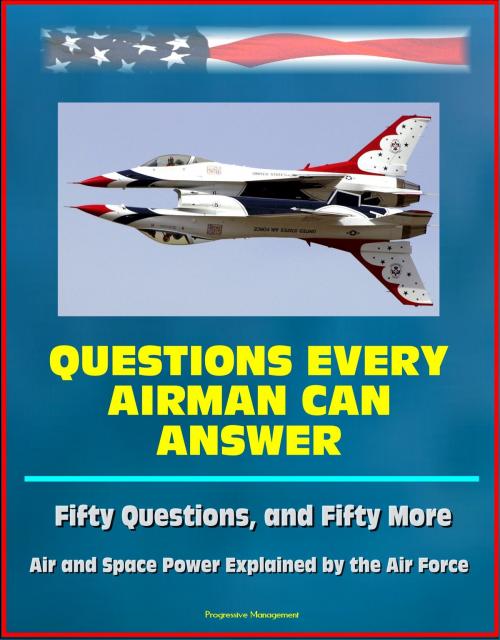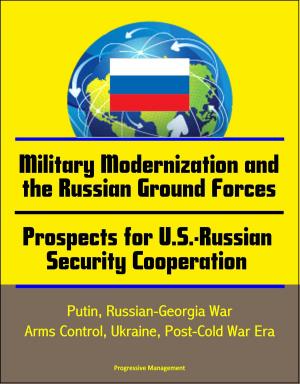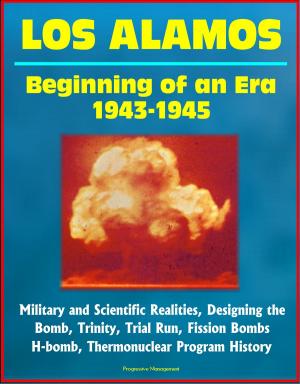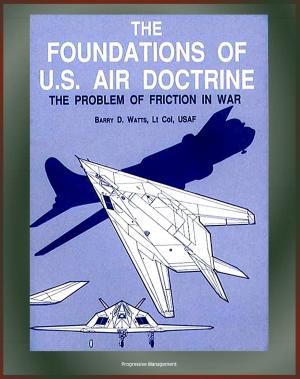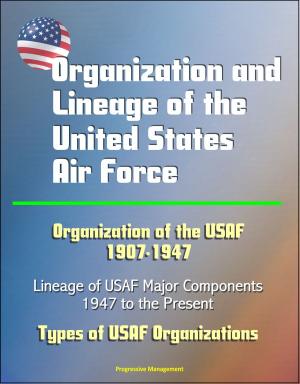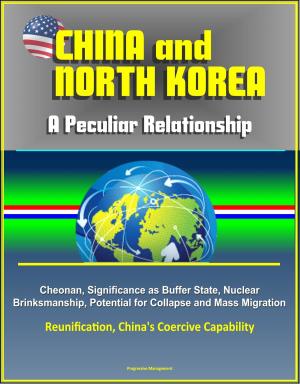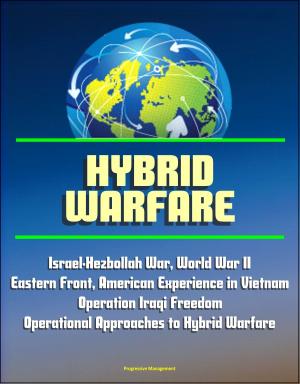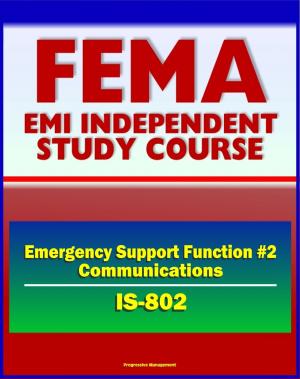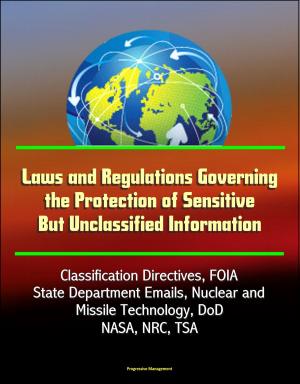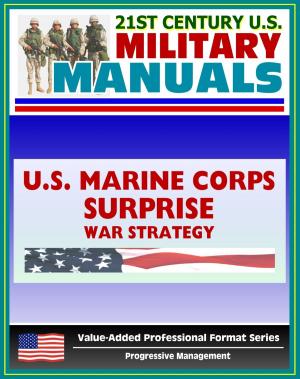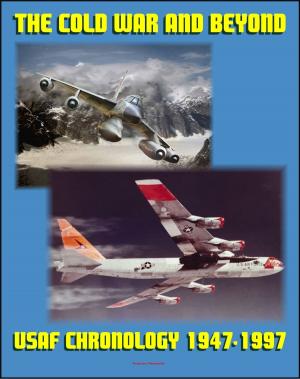Questions Every Airman Can Answer: Fifty Questions, and Fifty More - Air and Space Power Explained by the Air Force
Nonfiction, Science & Nature, Technology, Aeronautics & Astronautics, History, Military, Aviation| Author: | Progressive Management | ISBN: | 9781301636501 |
| Publisher: | Progressive Management | Publication: | February 20, 2013 |
| Imprint: | Smashwords Edition | Language: | English |
| Author: | Progressive Management |
| ISBN: | 9781301636501 |
| Publisher: | Progressive Management |
| Publication: | February 20, 2013 |
| Imprint: | Smashwords Edition |
| Language: | English |
Air Force airmen are often challenged to answer the very basic questions that define our service and what we do best. Despite our enthusiasm and passion, as a group, we don't always do so well in answering these kinds of questions. Unfortunately, airmen, more often than not, resort to one-liners, timeworn cliches, or sound bites, that, when closely scrutinized, fail to satisfy our detractors, our sister Services, the idle or professionally curious, or even ourselves on occasion. Moreover, even though we have a professional obligation to know, understand, and advocate these basic concepts, being able to articulate these positions doesn't mean that everyone will be convinced. But we can and must continue to espouse the concepts that explain how aerospace power is an integral part of American military power.
The tools we airmen most often use to capture and express our vision are words. While words like "flexibility," or "versatility," or "integrated," are tools that only describe aerospace power's attributes and characteristics, they can express essential truths in greater or lesser degrees. What follows is an effort to express some of those aerospace power truths. This information is intended to provide a quick, informal reference to the vital concepts in Air Force doctrine that all airmen should have at their fingertips.
Why is the Air Force a separate service? * What is aerospace power? * What is an airman? * What is air power? * What is space power? * What is doctrine? * What is policy? * What is strategy? * What is an objective? * What is an effect? * What is a target? * What is concentration of purpose? * What is centralized control? * What is decentralized execution? * Why is centralized control and decentralized execution important? * What is command? * What is control? * What is combatant command? * What is operational control? * What is tactical control? * What is administrative control? * What is unity of command? * What is a supported commander? * What is a supporting commander? * Why are supported and supporting relationships important? * What is maneuver? * What is mass? * What is flexibility? * What is versatility? * What is synergy? * What does integration mean? * What does synchronization mean? * What is the difference between integration and synchronization? * What does Expeditionary Aerospace Force mean? * What is an aerospace expeditionary force? * Why is a Joint Force Air Component Commander (JFACC) important? * Why does the Air Force believe that the JFACC, the Area Air Defense Commander (AADC), and the Airspace Control Authority (ACA) should be the same person? * What is a commander, Air Force forces? * What is an area of responsibility (AOR)? * What is an area of operations (AO)? * What is the battlespace? * What is the difference between AO, AOR, and battlespace? * What are parallel operations? * What is simultaneity? * What is air superiority? * What is air supremacy? * What is space superiority? * What is information superiority? * What does decisive mean? * How does the Air Force contribute to homeland security? * What is the Airman's perspective? * What is a commander? * What is an "A-staff"? * What is leadership? * What are core values? * What is a mission? * What is a core competency? * What are air and space power functions? * What are effects-based operations (EBO)? * What are measures of effectiveness (MOE)? * What is operational art? * What is operational risk? * What is a joint force? * What is a joint task force (JTF)? * What is a service component command? * What is an Air and Space Expeditionary Task Force (AETF)? * What is a functional component command? * What is a joint operations area (JOA)? * Why is air and space superiority important for the joint force? * What is information power? * How does the Airman view Information Operations (IO)? * What are "organic" forces? * What is the "Total Force"? * What is an Air Force Force (AFFOR)?
Air Force airmen are often challenged to answer the very basic questions that define our service and what we do best. Despite our enthusiasm and passion, as a group, we don't always do so well in answering these kinds of questions. Unfortunately, airmen, more often than not, resort to one-liners, timeworn cliches, or sound bites, that, when closely scrutinized, fail to satisfy our detractors, our sister Services, the idle or professionally curious, or even ourselves on occasion. Moreover, even though we have a professional obligation to know, understand, and advocate these basic concepts, being able to articulate these positions doesn't mean that everyone will be convinced. But we can and must continue to espouse the concepts that explain how aerospace power is an integral part of American military power.
The tools we airmen most often use to capture and express our vision are words. While words like "flexibility," or "versatility," or "integrated," are tools that only describe aerospace power's attributes and characteristics, they can express essential truths in greater or lesser degrees. What follows is an effort to express some of those aerospace power truths. This information is intended to provide a quick, informal reference to the vital concepts in Air Force doctrine that all airmen should have at their fingertips.
Why is the Air Force a separate service? * What is aerospace power? * What is an airman? * What is air power? * What is space power? * What is doctrine? * What is policy? * What is strategy? * What is an objective? * What is an effect? * What is a target? * What is concentration of purpose? * What is centralized control? * What is decentralized execution? * Why is centralized control and decentralized execution important? * What is command? * What is control? * What is combatant command? * What is operational control? * What is tactical control? * What is administrative control? * What is unity of command? * What is a supported commander? * What is a supporting commander? * Why are supported and supporting relationships important? * What is maneuver? * What is mass? * What is flexibility? * What is versatility? * What is synergy? * What does integration mean? * What does synchronization mean? * What is the difference between integration and synchronization? * What does Expeditionary Aerospace Force mean? * What is an aerospace expeditionary force? * Why is a Joint Force Air Component Commander (JFACC) important? * Why does the Air Force believe that the JFACC, the Area Air Defense Commander (AADC), and the Airspace Control Authority (ACA) should be the same person? * What is a commander, Air Force forces? * What is an area of responsibility (AOR)? * What is an area of operations (AO)? * What is the battlespace? * What is the difference between AO, AOR, and battlespace? * What are parallel operations? * What is simultaneity? * What is air superiority? * What is air supremacy? * What is space superiority? * What is information superiority? * What does decisive mean? * How does the Air Force contribute to homeland security? * What is the Airman's perspective? * What is a commander? * What is an "A-staff"? * What is leadership? * What are core values? * What is a mission? * What is a core competency? * What are air and space power functions? * What are effects-based operations (EBO)? * What are measures of effectiveness (MOE)? * What is operational art? * What is operational risk? * What is a joint force? * What is a joint task force (JTF)? * What is a service component command? * What is an Air and Space Expeditionary Task Force (AETF)? * What is a functional component command? * What is a joint operations area (JOA)? * Why is air and space superiority important for the joint force? * What is information power? * How does the Airman view Information Operations (IO)? * What are "organic" forces? * What is the "Total Force"? * What is an Air Force Force (AFFOR)?
